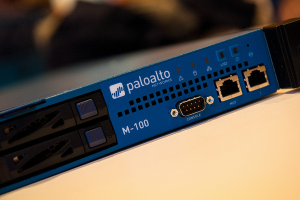Investors Love Amazon AWS – Should CIOs?
![]() Investors have been in love with Amazon this past year, and why not? The company’s market cap has soared to over $120B since it bottomed in 2009 at just over $20B, delivering very attractive returns.
Investors have been in love with Amazon this past year, and why not? The company’s market cap has soared to over $120B since it bottomed in 2009 at just over $20B, delivering very attractive returns.
Last weekend, the Wall Street Journal published a report citing sources that claim Amazon’s AWS business exceeded $2B in 2012 and will generate $3.8B in 2013, an 81% growth rate. The numbers are getting crazy. Some of these same and other sources have the AWS market (unclear what this means) hitting $38B by 2015 and AWS revenue reaching $20B by the end of the decade. The Journal article cited comments from Amazon CEO Jeff Bezos claiming that AWS can be at least as large as the company’s retail business. By comparison, Amazon’s retail operation is expected to grow 25% this year to $73.6B.
Despite accounting for less than 5% of Amazon’s revenue, estimates from Sanford Bernstein indicate that almost 40% of Amazon’s $2.7B of capital expenditures in 2012 went toward infrastructure related to AWS. That’s about the same as Facebook spent last year on IT infrastructure. This appetite is one reason that Amazon sold $3B in debt this past fall, taking advantage of low borrowing costs while it can.
What does all this action mean for CIOs?
IT executives are going to get even more pressure from the corner office over the next five years. Since Y2K, average spending on technology has dropped from between 5-7% of revenue to 2-3%. It started with the dotcom bubble bursting early last decade. Then Nick Carr’s pivotal article published in the Harvard Business Review, and subsequent book entitled “Does IT Matter,” was used as a hammer against CIOs – with all IT spending becoming the proverbial nail. The “Google Effect” followed this trend in the middle part of last decade. That is to say CEOs began to question why their IT at home was ‘better’ than their IT at work; further constricting IT budgets.
We’re now entering the next age of disruption to enterprise IT, which we’ve been tracking for a number of months here at Wikibon and over at SiliconAngle. We refer to it as “Software-led Infrastructure.” This trend is being bolstered by the likes of Amazon and Facebook. Wikibon’s David Floyer recently wrote:
A new era of datacenter infrastructure is emerging that will result in operational and application changes on a scale that we have not experienced in more than 15 years. At the core of this change is a shift to increasingly software-centric IT operations with the virtualization of the majority of hardware devices across the IT value chain. Pervasive virtualization across compute, storage, and networking technologies means that the point of control for the datacenter will exist in software, not hardware components.
We’re seeing this trend take shape today in the hyperscale market, which will begin to change the mindset of enterprise buyers. Specifically, for years, buyers have paid premiums for capabilities built on top of Intel microprocessors and off-the-shelf disk drives. The lines between hardware and software for infrastructure have been blurred but software-led infrastructure and its instantiation in the hyperscale space begins to separate these lines.
The impact to IT organizations (ITOs) is they will be forced to respond by either following the lead of the hyperscale crowd for their internal data centers or outsourcing to service providers who have the scale to keep pace with these trends. Most ITOs don’t have the skills required or the business model to justify large-scale infrastructure software development efforts so the pressure to outsource will mount. Amazon will be the standard against which the outsourcing choice will be evaluated.
What’s the Future Outlook for Amazon and How Should ITOs View AWS?
As Wikibon recently reported, Amazon is aggressively targeting the enterprise and sees AWS as a huge market opportunity and a way to increase profit margins. It wants to achieve this by using its low margin, low cost retail mentality and driving this into the enterprise against the leading players (e.g. IBM, HP, EMC, Oracle) who have significantly higher margins.
But the road to the enterprise will not be without obstacles. As Rodney Rogers points out in this blog, once you get beyond the “Ruby-on-Rails-Crowd” that predominates Amazon’s customer base you’ll find that enterprises actually have a different view of infrastructure and sometimes – quite often actually – it makes sense for them to own their infrastructure.
To wit: Well less than 10% of Amazon’s huge customer base is made up of companies with more than 250 employees. And they have, for the most part, not migrated existing apps or created purpose-built apps for AWS. They are using AWS for test/dev, short-term data crunching and Dropbox-like storage. Nice use cases but not core enterprise production action.
The vast majority (90%+) are SMBs or Web 2.0 companies who have either migrated legacy apps to AWS, including a lot of traditional websites, or created new apps, primarily mobile and consumer-oriented web services.
In this Breaking Analysis interview with Kristen Feledy, I talk a bit about Amazon’s cloud history, it’s outlook, the competition and how CIOs should view AWS – check it out:
In the video I discuss the fact that CIOs need to assess the risks of outsourcing to Amazon but really should focus on the following:
- CIOs need to embrace the cloud model and recognize that their organizations will end run IT if they’re perceived to be in the way;
- CIOs need to help their organizations ‘broker’ cloud offerings and can play a huge role in assessing the right strategic fit;
- As well, IT organizations can offer critical advice with respect to cloud topologies, taking into account issues such as bandwidth constraints/costs, proximity to data, recovery and other technical factors that could impact project success;
- CIOs and their teams can play a critical role in evaluating the degree to which AWS or other cloud services meet organizational edicts around security, governance, audits and the like.
By opening up to the notion of adopting AWS or other cloud services, CIOs will gain credibility with their organizations while at the same time securing their rightful place as independent technology advisors looking out for the best interest of the company. Amazon is doing the industry a service by inventing new models and pushing the marketing envelope. I predict it will create competition that spawns models with similar benefits to AWS offering services that while narrower in scope, will often be a better fit for enterprises due to enhanced service levels, better transparency and more flexible T’s and C’s.
As Amazon targets the enterprise market, the question is…how many arrows will it take?
A message from John Furrier, co-founder of SiliconANGLE:
Your vote of support is important to us and it helps us keep the content FREE.
One click below supports our mission to provide free, deep, and relevant content.
Join our community on YouTube
Join the community that includes more than 15,000 #CubeAlumni experts, including Amazon.com CEO Andy Jassy, Dell Technologies founder and CEO Michael Dell, Intel CEO Pat Gelsinger, and many more luminaries and experts.
THANK YOU













